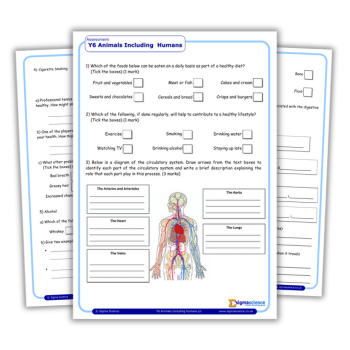Six ways to give meaningful feedback

Providing comments in a positive, encouraging way that helps pupils to develop in their learning journey is always time well spent, says Jack Dabell…

- by Teachwire

3. Be specific
Whatever the purpose of your feedback, you should be painfully specific. We’ve all written ‘well done’, or ‘good work’ when trying to get the last of our books marked. But this doesn’t provide clear, specific information.
Instead think about: what has the pupil done well? Why is this good work? What skills have they shown here? What skill do they need to practice more? What can they do now to deepen understanding?
4. Time to reflect
It doesn’t matter if feedback is written or verbal, immediate or delayed, ensure you provide time to reflect; it can’t be rushed. If you don’t provide the child adequate time to listen, check they understand, and then act upon your feedback, it is all for naught.
5. Consider how
A mix of both written and verbal feedback will probably benefit your children the most: verbal works well in class and written can be helpful if children are revisiting work after some time.
Of course, it’s not always cut and dry. So, ensure your marking and feedback policy is flexible enough to include different methods and different times because all your children are different!
One of the main considerations for written feedback is that it takes a lot of time. I found (as does the EEF document) that written isn’t any more effective than verbal feedback; what is important is that it’s specific and timely, and learners have sufficient time to engage.
6. 1-1 time
Time with each child is the best thing you can have with regards to feedback. I got to know my children’s abilities, interests, strengths and weaknesses better during these sessions than any other time.
Try inviting each learner to choose a book, project or piece of work they want to talk to you about. Make it entirely child led. Let pupils choose whether it’s a “look at how much hard work I did on this!” session, or a “I’d really like some more help on this” session. I valued every second of these conversations, as did (most of) the children!
Jack Dabell is education advisor at Tapestry, the online learning journal, and a former primary school teacher. He also writes for the Foundation Stage Forum.
1.Plan ahead
The best defense is a good offense. Planning to make feedback as meaningful as possible is essential if it’s to be impactful.
Think about what children are most likely to not understand. What are the top three misconceptions that could arise for children in the lesson? Develop a plan that considers how you will scaffold children during the lesson, and how you can support them afterwards to work through those misconceptions.
Plan how you will give feedback as part of your wider lesson prep. How can you ensure it is specific and targeted?
2. Consider when
Deciding when you are going to give feedback is not straightforward. In fact, the Education Endowment Foundation’s report Using Teacher Feedback to Improve Pupil Learningi, which was published last year, offers no clear answer on the best time to provide feedback.
Instead, this is where professional judgement should be trusted. A good option is to give live feedback – circulating around the classroom and providing support while the children are working.
Immediate feedback like this works for some children but for others providing enough time for them to digest and reflect on their own work is better. And of course, some children thrive with a mixture of both.
3. Be specific
Whatever the purpose of your feedback, you should be painfully specific. We’ve all written ‘well done’, or ‘good work’ when trying to get the last of our books marked. But this doesn’t provide clear, specific information.
Instead think about: what has the pupil done well? Why is this good work? What skills have they shown here? What skill do they need to practice more? What can they do now to deepen understanding?
4. Time to reflect
It doesn’t matter if feedback is written or verbal, immediate or delayed, ensure you provide time to reflect; it can’t be rushed. If you don’t provide the child adequate time to listen, check they understand, and then act upon your feedback, it is all for naught.
5. Consider how
A mix of both written and verbal feedback will probably benefit your children the most: verbal works well in class and written can be helpful if children are revisiting work after some time.
Of course, it’s not always cut and dry. So, ensure your marking and feedback policy is flexible enough to include different methods and different times because all your children are different!
One of the main considerations for written feedback is that it takes a lot of time. I found (as does the EEF document) that written isn’t any more effective than verbal feedback; what is important is that it’s specific and timely, and learners have sufficient time to engage.
6. 1-1 time
Time with each child is the best thing you can have with regards to feedback. I got to know my children’s abilities, interests, strengths and weaknesses better during these sessions than any other time.
Try inviting each learner to choose a book, project or piece of work they want to talk to you about. Make it entirely child led. Let pupils choose whether it’s a “look at how much hard work I did on this!” session, or a “I’d really like some more help on this” session. I valued every second of these conversations, as did (most of) the children!
Jack Dabell is education advisor at Tapestry, the online learning journal, and a former primary school teacher. He also writes for the Foundation Stage Forum.











